Sanwa DCM400 Handleiding
Sanwa
Meetapparatuur
DCM400
Bekijk gratis de handleiding van Sanwa DCM400 (2 pagina’s), behorend tot de categorie Meetapparatuur. Deze gids werd als nuttig beoordeeld door 30 mensen en kreeg gemiddeld 4.9 sterren uit 15.5 reviews. Heb je een vraag over Sanwa DCM400 of wil je andere gebruikers van dit product iets vragen? Stel een vraag
Pagina 1/2

SANWA ELECTRIC
INSTRUMENT CO.,LTD.
Dempa Bldg,Sotokanda2-Chome
Chiyoda-Ku,Tokyo,Japan
DCM400
DIGITAL CLAMP METER
General Specification
Digital Display: 3 3/4 digits LCD display with maximum reading 3999
Analog Display: 42 segments fast analog bar display
Symbol and Scale range
:
adjust automatically according range and input signal
Polarity: When negative signal in apply to the meter, will show.
Over Load: When the signal larger than the maximum will be show
Sample Rate: 2 times/sec for digital data
20 times/sec for analog bar
Low Power Indication
: When the battery is under the proper operation range,
will appear on the LCD display.
Power Source: R03 or AAA 1.5V battery 2.x
Auto Power Off: If there is no key or dial operation for 30 minutes, the meter
will power itself off to save battery consumption.
Battery Life: Approx. 150 hrs
Power Consumption: 7.4mW
Clamp opening size: 25mm
Operating temperature: 0 C 40 C, <80% RH, No condensation˚~ ˚
Storage temperature: -10 C 60 C, <70% RH, No condensation˚~ ˚
Approvals: IEC61010-2-32 300V CAT.III 600V CAT.II
Environmental conditions:
Altitude up to 2000 meters, indoor use, pollution
degree 2
Withstand voltage: AC3.7kV (50/60Hz) for a minute.
Dimension (L H) : x x W 193 50 x x 28mm
Weight: 230g
Accessory:
Instruction Manual, Carrying case (C-DCM400), Test lead (TL-23a).
Specification
This product has been designed and manufactured in accordance with the safety
standards applicable to IEC 61010-2-32 Electronic Measuring Equipment and
has passed the inspection. Using this product in ways not specified in this
manual may damage its protection function. The instructions given under the
heading of “WARNING” and “CAUTION” must be followed to prevent
accidents.
WARNING : Intended to prevent personal injury such as burn and
electric shock and other serious accidents.
CAUTION : Intended to prevent misuse that could result in personal
injury and damage to equipment including this instrument.
Safety Information - Before use, read the manual -
1. This is a clamp meter for low-voltage circuits. Never use it on the
power line that exceeds 600VAC to ground. The measurement
classification category of this instrument is 300V CAT. III, 600V
CAT. II.
2. Use the meter only as described in this manual.
3. Do not apply more than the rated maximum input.
4. Pay special attention to voltages above 33VAC (46.7Vpeak) and
70VDC that are hazardous to the human body.
5. Do not use the meter if it is damaged or broken.
6. Do not use the meter with the battery lid or rear case removed.
7. During measurement, keep your fingers behind the barrier (finger
guard).
8. When measuring un-insulated conductors, be careful not to touch
them. Otherwise you will suffer electric shock.
9. Do not use the meter near flammable gases or solvents.
10. Do not use the meter with wet hands or in a damp environment.
11. Do not disassemble or modify the meter nor use components not
specified by the manufacturer.
12. Inspect the meter at least once a year.
13. The meter is for indoor use.
WARNING
The accuracy specification is defined as ±( …%reading+…count )
At 23±5 C, 80%RH˚≦
Accuracy
±(1%rdg.+2dgt.)
Accuracy
50Hz 500Hz〜
±(1.5%rdg.+5dgt.)
Overload
Protection
660Vrms
Overload
Protection
660Vrms
Input
Impedance
1MΩ
Input
Impedance
1MΩ
DCV (Autorange)
Range
400V
600V
Range
400V
600V
Resolution
0.1V
1V
Resolution
0.1V
1V
ACV (Autorange)
Resolution
0.01A
0.1A
Accuracy Overload
Protection
600Arms
Range
40A
400A
ACA (Autorange)
Resolution
1Hz
10Hz
1Hz
10Hz
100Hz
1kHz
Accuracy
±(0.1%rdg.+1dgt.)
±(0.1%rdg.+1dgt.)
Function
Current
Frequency
Voltage
Frequency
Overload
Protection
600Arms
600Vrms
Sensitivity
2Arms
3Vrms
5Vrms
Range
20Hz 4kHz〜
10kHz
4kHz
40kHz
400kHz
1MHz
Frequency (Hz) (Autorange)
50Hz 60Hz〜
±(1.9%rdg.+5dgt.)
60Hz 500Hz〜
±(2.5%rdg.+5dgt.)
Range
400Ω
Resolution
0.1Ω
Accuracy
±(1%rdg.+2dgt.)
MAX Test
Voltage
1.5VDC
Overload
Protection
600Vrms
Overload
Protection
600Vrms
Ohm (Ω)
Range MAX Test
Voltage
1.5VDC
Continuity ( )
Active Region
<40 Ω
Electrical Specification
⑥ COM input terminal
⑦ Positive input terminal
⑧ Data hold button
⑨ Battery lid
⑩ Rear case
① Current Sensing Clamp
② Barrier
③ Jaw-opening handle
④ Main fuction selector
⑤ LCD display
Instrument Familiarization
Switch the main function selector to range.
Open the clamp by pressing the jaw-opening handle and insert the cable to be
measured into the jaw.
Close the clamp and get the reading from the LCD panel.
Note:
Before this measurement, disconnect the test lead with the meter for safety.
In some occasion that the reading is hard to read, push the HOLD button and
read the result later.
CORRECT
INCORRECT
Measuring Instruction
AC Current Measurement
Switch the main function to range.
Connect red test lead to “+” terminal and black one to the “ COM ” terminal.
Connect tip of the test leads to the points where the conduction condition
needed.
If the resistance is under 40 , the beeper will sound continuously.Ω
Continuity Test
Beeper
Short circuit Open circuit
Switch the main function to range.
Connect red test lead to “+” terminal and black one to the “ COM ” terminal.
Connect tip of the test leads to the points where the value of the resistance is
needed.
Read the result from the LCD display.
Note:
When take resistance value from a circuit system, make sure the power is cut
off and all capacitors need to be discharged.
Resistance Measurement
Switch the main function selector to range.
Connect red test lead to “+” terminal and black one to the “ COM ” terminal.
Measure the voltage by touch the test lead tips to the test circuit where the
value of voltage is needed.
Read the result from the LCD display.
DCV Measurement
Maximum Input Voltage is 600V AC/DC. Do not attempt to take any
voltage measurement that may exceed to avoid Electrical shock hazard
and/or damage to this instrument.
WARNING
Switch the main function selector to range.
Connect red test lead to “+” terminal and black one to the “ COM ” terminal.
Measure the voltage by touch the test lead tips to the test circuit where the
value of voltage is needed.
Read the result from the LCD display.
ACV Measurement
Maximum Input Voltage is 600V AC/DC. Do not attempt to take any
voltage measurement that may exceed to avoid Electrical shock hazard
and/or damage to this instrument.
WARNING
Switch the main function to “ Hz ” range.
Connect red test lead to “+” terminal and black one to the “ COM ” terminal.
Connect tip of the test leads to the points where the frequency of the voltage
signal is needed.
Read the Result from the LCD display.
Frequency measurement from the terminals
Switch the main function selector to “ Hz ” range.
Open the clamp by pressing the clamp-opening handle and insert the cable to
be measured into the clamp.
Close the clamp and get the reading form the LCD display.
Note:
When doing frequency measurement, user should either use the terminal signal
or clamp signal but not both. If both sources are applied an error will occur.
Frequency measurement with the clamp
Battery Changing
1. Maintenance and Inspection
1) Appearance: Is the meter not damaged due to falling or other cause?
2) Test leads:
・Are the core wires not exposed from the test leads?
・Is the plug when inserted to the input terminal not loose?
If any of the above problems exists, stop using the meter and request for repair.
2. Inspection
Inspect the meter at least once a year.
3. Storage
4. Battery when the meter is shipped:
A battery for monitoring has been installed prior to shipment from the
factory. It may be discharged before the expiration of the described battery
life.
*The battery for monitoring is a battery used to check the functions and
performance of the product.
Maintenance
1. The following instructions are very important for safety.
Read this manual thoroughly to ensure correct maintenance.
2. Calibrate and inspect the meter at least once a year to ensure safety
and maintain its accuracy.
WARNING
1. The panel and case are not resistant to volatile solvent and must not
be cleaned with thinner or alcohol.
2. The panel and case are not resistant to heat. Do not place the meter
near heat-generating devices.
3. Do not store the meter in a place where it may be subjected to
vibration or where it may fall.
4. Do not store the meter in places under direct sunlight, or hot, cold or
humid places or places where condensation is anticipated.
5. If the meter will not be used for a long time, remove the batteries.
CAUTION
Symbol Definition
1.
When the battery voltage drop below proper operation range the symbol will
appear on the LCD display and the battery need to changed.
2. Before changing the battery, switch the main dial to “OFF” and disconnect
test leads. Open the battery lid by a screwdriver.
3. Replace the old batteries with two R03 or AAA size batteries.
Close the battery lid and fasten the screw.
To prevent electrical hazard or shock, turn off clamp meter and disconnect
test leads before removing battery lid.
Never uses the meter before the battery lid is closed.
WARNING
⑩
Low battery indication
Auto range indication
Hold Data indication
Continuity function indication
Voltage measurement indication
Current measurement indication
Alternative source indication
Direct source indication
Resistance
Polarity indication
Analog bar graph indication
Frequency Measurement indication
Product specificaties
| Merk: | Sanwa |
| Categorie: | Meetapparatuur |
| Model: | DCM400 |
Heb je hulp nodig?
Als je hulp nodig hebt met Sanwa DCM400 stel dan hieronder een vraag en andere gebruikers zullen je antwoorden
Handleiding Meetapparatuur Sanwa

6 Januari 2024

5 Januari 2024

5 Januari 2024

29 December 2023

29 December 2023

28 December 2023

28 December 2023

27 December 2023

27 December 2023

27 December 2023
Handleiding Meetapparatuur
- DriveTest
- Grohe
- INFICON
- LaCie
- PQ Plus
- Cablexpert
- Meec Tools
- Truelife
- SOEKS
- Alecto
- Continental Edison
- Voltcraft
- Innoliving
- Pioneer
- Smart365
Nieuwste handleidingen voor Meetapparatuur
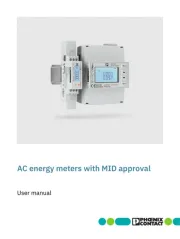
5 Augustus 2025
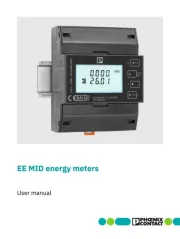
4 Augustus 2025
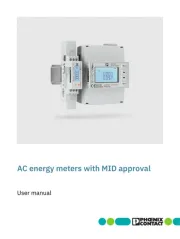
4 Augustus 2025
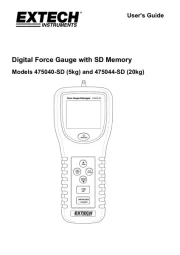
4 Augustus 2025
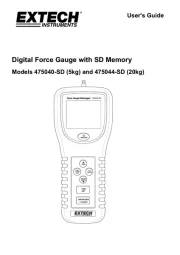
4 Augustus 2025
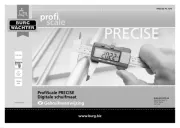
2 Augustus 2025
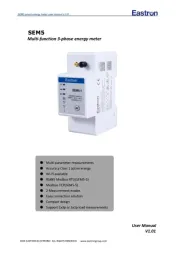
29 Juli 2025
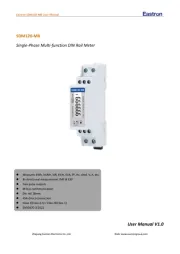
29 Juli 2025
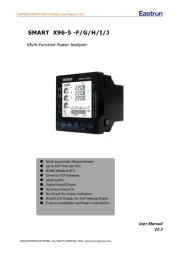
29 Juli 2025

29 Juli 2025